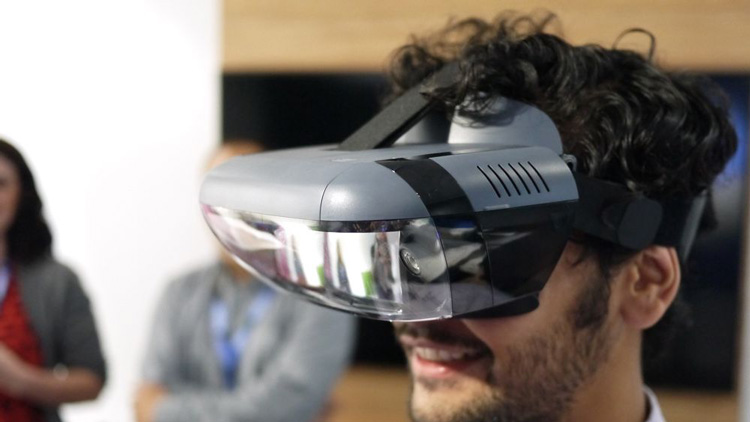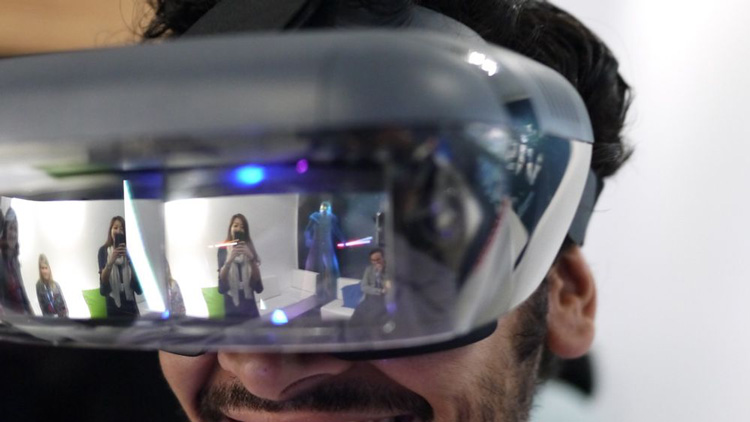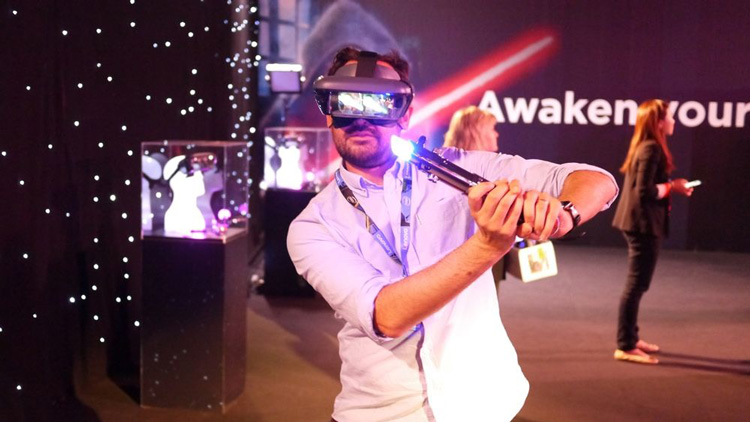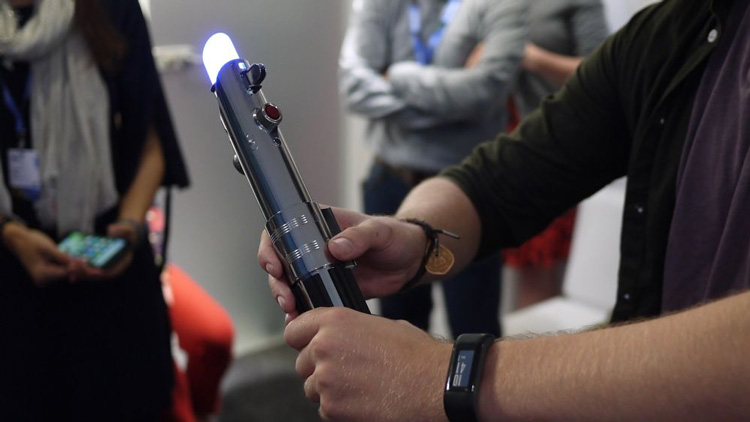AR Headset Fulfils Your Childhood Dreams: Lightsaber Battles
The Lenovo Mirage is a headset built around one experience: the company’s partnership with Disney for Jedi Challenges – a set of Augmented Reality (AR) games. The main event is a mode that enables you to lightsaber battle a host of Star Wars baddies, with separate chess and strategy mini-games on top.
True AR experiences are few and far between, and successful wearable implementations are even more scarce – making Jedi Challenges something of a risk. With a $199 price tag for the headset, lightsaber and room sensor, it needs to be good – and that’s been in short supply for AR to date.
The headset itself is pretty low-fi, and there’s not a great deal of design going on here. You slide your smartphone – most big brands including iPhone are supported – into the top, so the whole unit is pretty wide. The screen area is dominated by a Perspex visor – this is AR remember, so you get to see the real world.
There’s actually some impressive tech going on here. Lenovo confirmed that the field of view is an impressive 33° vertically and 60° horizontally – beating Microsoft HoloLens’ 17 and 30° respectively. Just in terms of tech, that’s a pretty big jump forward for AR headsets.
Donning the Mirage is much like popping on most smartphone VR headsets – it’s pretty, but it’s very lightweight so it doesn’t feel like it’s hanging off your face, and being able to see the real world makes it feel less imposing.
The headset works by reflecting the digital elements on the smartphone’s screen onto the Perspex screen, creating the augmented experience. The room sensor operates very much like Sony’s PlayStation 4 sensors, using a light beacon placed on the floor to track the position of the lightsaber and headset, and two fisheye cameras on the headset itself. This enables you to walk around in your space, essential to battling the swarm of incoming Jedi.
So how does it work? Is the Force strong with this one?
Who hasn’t wanted to wield a lightsaber? We can’t think of any Star Warsfranchise game or experience that’s come close to offering that feeling.
When augmented Kylo attacks, you must match the desired on-screen position of your lightsaber to block his shots. After repelling three or four in close succession, he stands awkwardly off-guard, letting you slash and smash him until he takes back up position, and it’s his turn to attack again. It’s a little stilted and formulaic and there wasn’t much difficulty (we won both our first two turns) but it’s damned good fun.
Visually, it’s a lot better than other wearable AR experiences we’ve tried. You’re hardly treated to eye-popping visuals and Jedi Challenges kind of glosses over the shortcomings of AR graphics by embracing the kind of flickering blue hologram spat out by R2D2 in 1977 for all of the characters.
The technology also worked fairly seamlessly, given that it’s still in development. It’s not perfect, when we drew our lightsaber the glowing AR blade sat kind of awkwardly atop of the real world handle, kind of skewed off to the side. Also, Kylo Ren kind of loomed too close to you during the action, making it all a bit frantic.
What’s clear is that this probably represents the high water mark for AR so far. The experience is decent, it works well enough, and from a chin-stroking analysis of AR as a medium, it enables an experience that’s not been achieved before: wield a lightsaber; battle Jedis; use the Force. AR should be about enabling new experiences, and in this instance, mission accomplished.
Despite having its own identity as a headset, there are no other apps or games for the Lenovo Mirage right now, so it’s a pretty single-use deal. Hopefully in time owning a Mirage unlocks a host of cool experiences, but right now, it’s simply another part of Disney’s huge Star Wars cash-in.
The Jedi Challenges set, which includes everything you need, is available to pre-order and hits stores in October. It’s set to cost $199, and we can truly see this cleaning up this holiday season, as the new Star Wars film lands.






Comments are closed, but trackbacks and pingbacks are open.